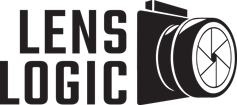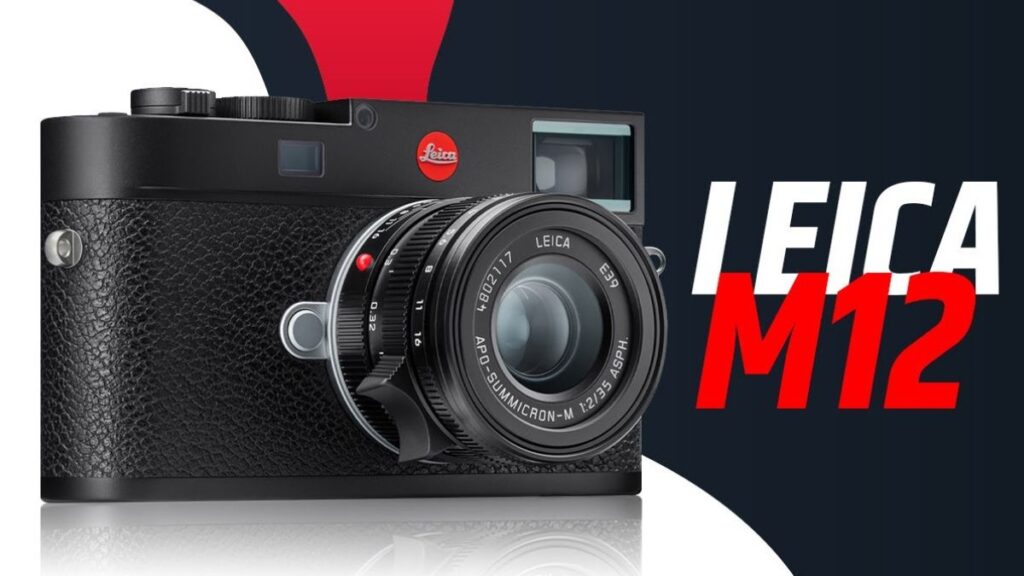Ultra-high-speed cameras that capture thousands of frames per second represent the pinnacle of photo technology. Camera makers have been pushing the limits of high-speed video and burst shooting for years. Now, rumors suggest Nikon might be working on something amazing — a camera that shoots at 1000 frames per second.
This news has excited photographers and videographers worldwide. Why? Because a Nikon camera with such abilities could transform high-speed photography and open new creative doors.
Imagine capturing action scenes, wildlife moments, and scientific events in stunning detail. This camera could impact not just photography and filmmaking but also industries that need high-speed imaging for research.
In this article, we’ll explore what it would take for Nikon to create such a camera. We’ll look at who would benefit most, the challenges Nikon faces, and whether a 1000 FPS Nikon camera is realistic or just a dream.
The Technology Behind a 1000 FPS Camera
What Does 1000 FPS Mean in Photography?
Frames per second (FPS) tells us how many images a camera can capture in one second. This matters for both still photos and video, especially when shooting fast-moving subjects.
Most pro cameras today shoot between 10 and 30 frames per second for stills. Some high-end models, like the Nikon Z9 can reach about 120 frames per second in low-resolution bursts. That’s impressive but still far from 1000 frames per second. A 1000 FPS camera would change everything. It would let photographers capture the fastest subjects in amazing detail. From hummingbird wings to bullets piercing objects, you could freeze moments that normally blur past our eyes. But reaching such speeds isn’t easy. It requires major advances in camera technology, including sensors, data handling, and shutter systems.
Challenges of Achieving 1000 FPS
Sensor Technology: The sensor is crucial. To reach 1000 FPS, Nikon would need sensors with incredibly fast readout speeds. Current CMOS sensors would likely struggle at this speed without causing distortion and rolling shutter problems.
Stacked CMOS sensors might help as they offer faster speeds by layering multiple components. But even these might not be fast enough. Nikon would need to push sensor design further, perhaps developing entirely new sensor types.
Data Throughput: Handling the massive amount of data would be daunting. Shooting at 1000 FPS, especially at 4K or 8K, would create several gigabytes of data every second.
Processing, storing, and moving this data in real-time would require powerful processors, fast memory cards, and efficient compression. Nikon might need to create new storage solutions to handle this data flow.
Shutter Mechanism: Traditional mechanical shutters wouldn’t work at such high speeds. They’d be too slow and would break down quickly. Instead, Nikon would need to use electronic or global shutters.
Global shutters capture the entire frame at once instead of scanning from top to bottom. This prevents rolling shutter issues, which would be a major problem at 1000 FPS. But global shutters are hard to implement at such high speeds.
Super High-Speed Sensors: Is Nikon Ready?
Nikon has a strong history in sensor development. They excel in low-light performance, dynamic range, and image quality. But creating a sensor capable of 1000 FPS presents new challenges.
In 2021, Nikon developed a stacked CMOS sensor that could shoot 4K video at 1000 FPS. This shows Nikon is exploring ultra-high-speed imaging. But developing a sensor is just the first step – building it into a working camera is much harder.
The rumored sensor offers a dynamic range of 110 decibels at 1000 FPS and 134 decibels at 60 FPS. While impressive, Nikon still needs to solve many practical issues to create a working camera system.
Nikon can clearly innovate in high-speed imaging, but whether they can bring this technology to market remains uncertain.
Potential Use Cases for a 1000 FPS Camera
Who Would Benefit from Ultra-High-Speed Photography?
A 1000 FPS camera would transform many areas of photography and video. It would impact not just photographers but also various industries and scientific researchers.
Sports Photographers: For sports photographers, this camera would be revolutionary. They could freeze fast action in incredible detail – from the exact moment a soccer ball leaves a player’s foot to the split second a race car crosses the finish line.
Extreme sports like skydiving, auto racing, and surfing could be captured with amazing clarity. Photographers could document moments too fast for the human eye to see, creating unique and compelling images.
Wildlife Photographers: Nature photographers would gain tremendous benefits. Wildlife moves quickly and unpredictably. With a 1000 FPS camera, they could capture a bird’s wings mid-flight or a predator attacking with perfect detail. Bird photography could reach new heights, allowing precise analysis of wing movements and behavior. Wildlife enthusiasts would be excited about these possibilities.
Scientific and Research Use: Scientists would find many uses for a 1000 FPS Nikon camera. High-speed cameras already help in research fields like biomechanics, fluid dynamics, material science, and ballistics. Researchers could capture chemical reactions, study impact tests, or analyze how living organisms move. Every frame could be examined to better understand processes that happen too quickly for normal observation.
Industrial Applications: Manufacturing and engineering could use a 1000 FPS camera for practical purposes. In assembly lines or quality control, it could help identify flaws in fast-moving components.
Video Capabilities: Could 1000 FPS Be Used for Slow-Mo Video?
Beyond still photography, a 1000 FPS Nikon camera would excel at high-speed video. Filmmakers and content creators who specialize in slow-motion would love this technology.
High-speed video cameras exist today, but they’re typically large, expensive, and designed for industrial or scientific use. If Nikon could make a user-friendly camera with these capabilities, it would greatly impact creative storytelling.
Slow-Motion Video Applications: Imagine recording sports in ultra-slow motion, capturing every detail of an athlete’s movements. Filmmakers could create stunning visuals that enhance storytelling by showing events in extreme detail. Content creators on YouTube and Instagram could push creative boundaries. Beauty shots, product reviews, and everyday moments could become artistic masterpieces through 1000 FPS technology. Recording slow motion at 4K or 8K resolution would be a major advance. It would give creators access to footage previously possible only with specialized equipment.
Challenges in Developing a 1000 FPS Camera
Data and Storage Demands
One major challenge for Nikon would be managing the enormous data created by a 1000 FPS camera. Capturing images or video at such high rates, especially at high resolutions, would generate massive amounts of data every second.
Massive Data Generation: To put this in perspective, shooting 4K video at 1000 FPS would create hundreds of gigabytes in just minutes. Even short bursts would require advanced systems for storing and transferring data quickly. The camera’s buffer would fill almost instantly with traditional technology, making continuous shooting nearly impossible.
Nikon would need to develop high-speed memory cards or external storage solutions capable of write speeds far beyond current standards. Current CFexpress cards, while fast, would struggle to keep up with the data flow from a 1000 FPS camera. They would also need new compression methods to reduce file sizes without losing image quality, perhaps employing AI-assisted compression techniques to maintain detail while shrinking file sizes. The transfer speed between the camera and computer would also become a critical bottleneck. Even the fastest USB or Thunderbolt connections might prove inadequate, potentially requiring Nikon to develop new data transfer protocols or specialized hardware interfaces for post-processing work.
Battery Life and Power Consumption
Rapid data processing at high resolutions would quickly drain even powerful camera batteries. A typical professional camera battery that lasts for thousands of still photos might only power a 1000 FPS camera for minutes of active shooting. Nikon would need advanced power management systems to ensure users could shoot at 1000 FPS for reasonable periods. They might need to develop external power solutions or design new high-capacity battery packs to make this technology practical for extended shooting. Battery technology itself might need advancements, possibly using newer lithium-polymer formulations or even exploring alternative power sources. Photographers would likely need to carry multiple battery packs and perhaps even portable power stations for field work with such a power-hungry camera.
Heat generation would compound the power problem. High-speed processing generates significant heat, which in turn decreases battery efficiency and overall performance. Thermal management would become a key design consideration, requiring innovations in camera body design and internal component layout.
Market Demand and Feasibility
Perhaps the biggest question is whether enough people want a 1000 FPS camera to justify its development.
Who Needs 1000 FPS? While sports photography, wildlife photography, and scientific research would benefit from this technology, average photographers and even many professionals might not need it. Most commercial work rarely requires frame rates above 30 FPS, leaving a very specialized market for ultra-high-speed capabilities.
Nikon would need to carefully assess if there’s a profitable market for such a camera. Developing it would require extensive research and substantial investment, potentially running into millions of dollars for R&D alone. The return on investment might take years, especially if adoption rates remain low due to high costs and specialized applications.
The price point would likely be prohibitive for most users. Given the advanced technology required, a 1000 FPS camera could cost more than $20,000, placing it beyond the reach of individual photographers and smaller studios. This would limit its market to large production companies, research institutions, and rental houses.
Nikon would also need to balance this development against other priorities. With the camera market already facing challenges from smartphones and mirrorless transitions, the company must decide whether investing in ultra-niche technology makes business sense compared to improving their mainstream offerings.
Conclusion: Is a Nikon 1000 FPS Camera a True Possibility?
Creating a 1000 FPS camera would be a remarkable achievement for Nikon. It would push the limits of sensor design, data processing, and power management. However, whether such a camera is feasible remains unclear. While Nikon has made progress with high-speed sensors, developing a viable product that meets the needs of photographers, filmmakers, and researchers is challenging. Even if Nikon succeeds, the high price would likely limit it to specialized users. But if successful, Nikon could become the leader in high-speed imaging technology.
What do you think? Would a 1000 FPS Nikon camera change how you capture the world? Let us know in the comments.


